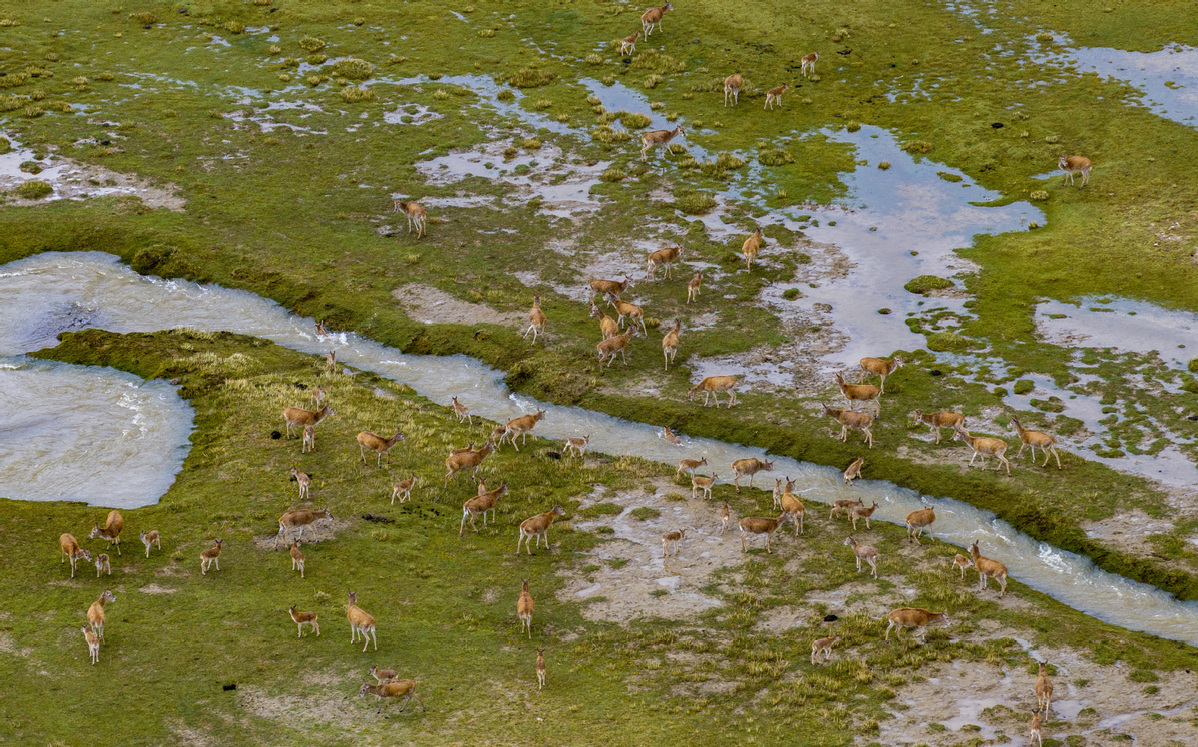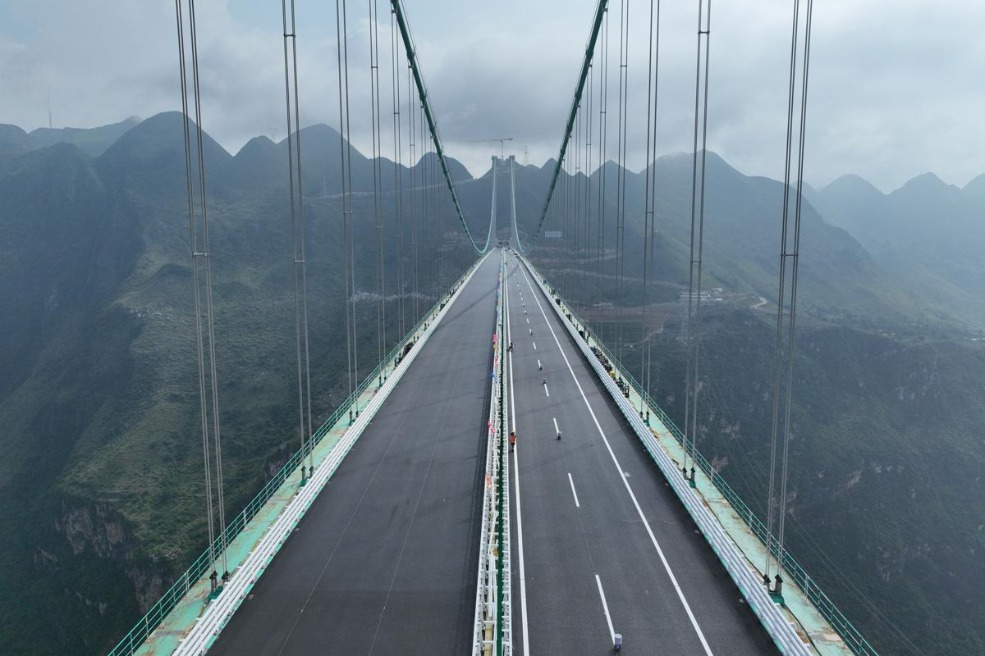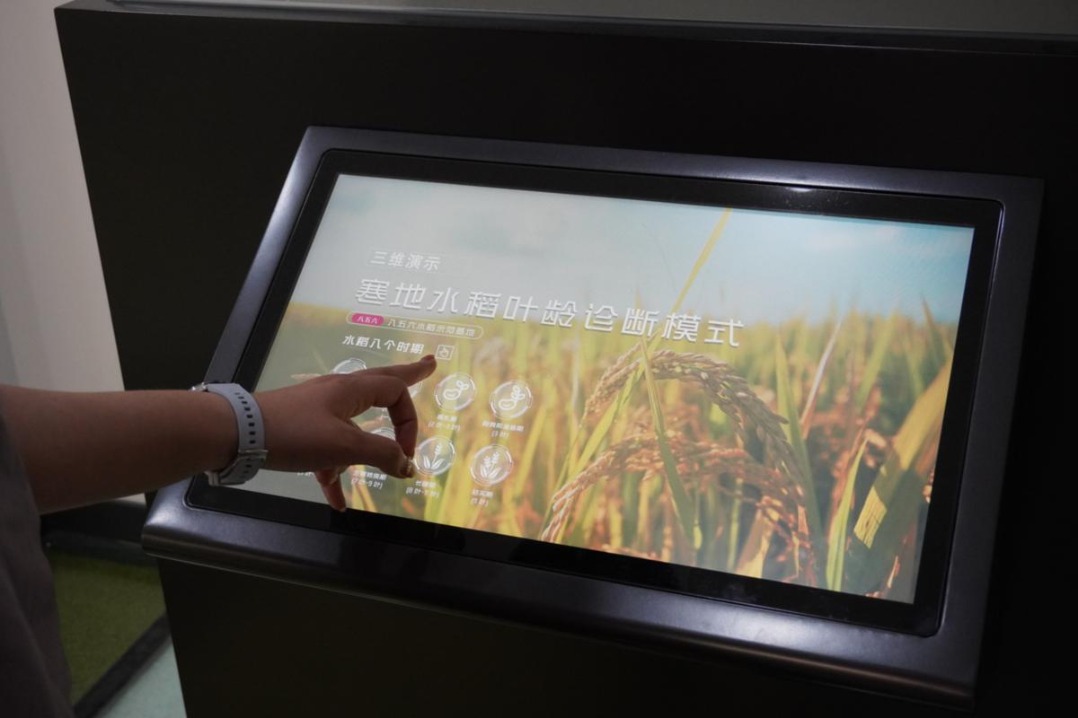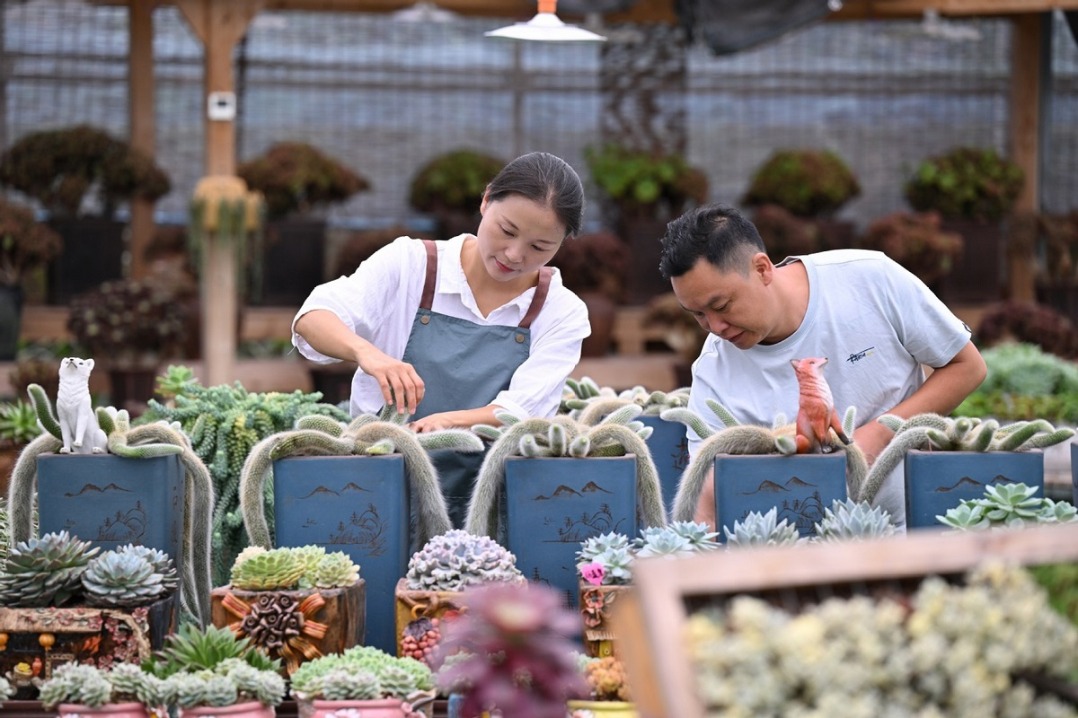Community-led grassland project reshapes rural economy in Xizang


In a windswept stretch of the Qinghai-Tibet Plateau, a community-led greening effort is transforming barren desert into productive pasture, providing herders with a more stable source of income.
In Ge'gyai county, Ngari prefecture of the Xizang autonomous region, a man-made grassland project is reshaping the rural economy. Villagers, aided by state funding, have developed more than 200 hectares of irrigated pasture in one of the most inhospitable parts of Xizang, generating both green cover and green income.
Lhakpa Ngodrub, head of Vombudangsang township, said the new pastureland has eased winter feed shortages and reduced pressure on the area's fragile natural grasslands.
"It also improves soil quality, curbs desertification, and conserves water resources, contributing to the sustainable development of our local ecosystem," he said.
The initiative is part of a broader government-led effort to boost local incomes, particularly among herders, by diversifying income sources. Villagers have turned a once desolate desert into a green oasis through soil improvement, irrigation canal construction and land leveling.
Last year, a total of 239.3 hectares of artificial grassland was cultivated, generating 2.29 million yuan ($319,000) in revenue. More than 800 residents from nearly 250 households have benefited, with an extra per capita income of 2,852 yuan.
Tsering Drukyi, a 28-year-old driver from the village, said his family, along with his parents and older brother, leased around 20 to 26.7 hectares of land in 2016. The initiative, he said, has brought his family an additional annual income of more than 30,000 yuan.
"Every year from May to June, we plant the grass seeds, irrigate them regularly using the canal system, and clear away stones," he said. "By October, the grass grows over a meter tall, and we harvest it."
Tsering Drukyi said his family keeps part of the dry grass to feed their sheep through the winter and sells the remainder.
Located on the western edge of the Qinghai-Tibet Plateau at an average altitude of more than 4,500 meters, Ngari is often called "the roof on the roof of the world".
Tsering Drukyi recalled that the first year of planting was the most difficult due to the rocky, gravel-covered ground. "But as the soil improved year by year, planting became much easier," he said.
Looking ahead, Lhakpa Ngodrub said the township plans to expand the artificial planting area and improve the quality of the grass. "We're also exploring ways to integrate grass planting with livestock husbandry, ecotourism and other sectors to maximize its ecological, economic and social benefits," he said.
Yang Liyuan, an associate research fellow at the China Tibetology Research Center, said that when developing local industries, it is essential to consider each region's specific resource endowments to effectively increase residents' incomes and promote rural revitalization.
"In Ngari prefecture, where the land is vast and the population sparse, even neighboring townships often possess very different natural resources. For example, Vombudangsang township has pursued prosperity through artificial grass cultivation, while the neighboring Tsakha township has focused on developing its salt industry," he said.
Yang said that during the process of industrial development, ecological protection must remain the top priority. "Only by doing so can we achieve a harmonious balance between high-quality development and high-level environmental protection in Xizang," he said.
Daqiong contributed to this story.





































